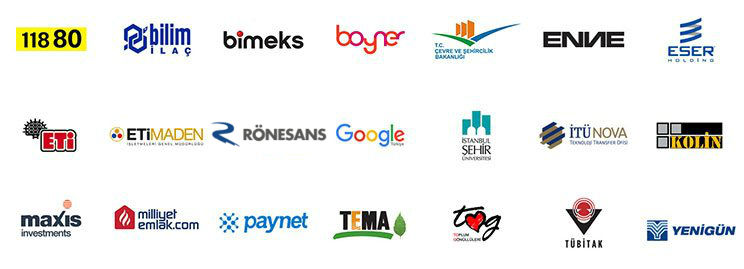
Digital transformation is no longer a project of technology departments, but a company's survival and growth strategy.
At the heart of this strategy lies the most fundamental decision that shapes your operations, efficiency, and customer experience: Will you purchase ready-made software to manage your business processes, or will you build it according to your own needs?
This is the most critical crossroads faced by businesses of all sizes, known as “buy vs. build.”
On one side, there are packaged software that can be installed quickly and meets industry standards; on the other, there are custom software designed to perfectly fit the DNA of your business.
This guide is the ultimate resource designed to clearly reveal the differences between these two worlds, not only presenting the options but also honestly answering the question, "When are you ready for which option?"
The Hidden Walls of Standard Solutions: Why Packaged Software Falls Short
Packaged software is an attractive starting point for many businesses.
But as companies grow and their processes become more complex, these “one-size-fits-all” solutions start to build invisible walls.
Inefficient Workflows and the "Workaround" Culture
Your teams are forced to abandon their natural and productive ways of working to adapt to the software's rigid and immutable logic. This leads to the creation of inefficient "workarounds" like Excel spreadsheets, manual data copying, and email chains to get around the software that's supposed to speed up the process. This creates a hidden operational burden and a morale drain.
Data Silos and Decision Paralysis
Finance, sales, production, and marketing departments may each use different software packages optimized for their specific functions. When these software don't "talk" to each other, it becomes impossible to obtain a holistic view of performance across the company. Management is left with conflicting reports from different departments, paralyzing strategic decision-making.
Erosion of Competitive Advantage
If you use the same standard ERP or CRM software as all your competitors in your industry, your operational processes will be similar to theirs. This turns your processes into commodities and prevents you from establishing an operational advantage that would differentiate you in the market and that your competitors can't replicate.
Unpredictable Total Cost of Ownership (TCO)
The initial license or subscription fees for packaged software often seem reasonable. However, additional modules required by your business, increased license fees per user, exorbitant consulting fees for limited customizations, and mandatory updates can significantly increase the total cost of ownership over the years.
The Price of Inefficiency: What is the True Cost of Incompatible Software?
The cost of these operational inefficiencies and strategic constraints is not just a few hours of lost time.
This creates a tangible cost that directly impacts your company's profitability, growth potential and market position.
Analysis from leading research and advisory firm Gartner clearly highlights the dangers of this mismatch.
Gartner states that a significant portion of technology investments fail to deliver the expected return on investment (ROI) because they do not fully align with the real needs and strategic objectives of the business.
This means that every penny invested in the wrong technology is a lost opportunity that could actually be invested in a better solution.
This waste is not just financial.
The motivation of your talented employees who are constantly forced to work with inefficient and cumbersome tools decreases and the risk of turnover increases.
It is nearly impossible to measure the long-term cost of a missed market opportunity or a dissatisfied customer because you moved slower than your competitors because of incompatible software.
Strategic Preparation: The Most Important Step Before Switching to Custom Software
When packaged software fails, the idea of custom software can seem like a savior.
But custom software isn't a magic wand; rather, it's a "mega-fund" that amplifies existing processes and culture, multiplying its impact.
The most important principle to remember is: "Software doesn't automate chaos; it just makes chaotic processes faster."
Therefore, before embarking on the custom software journey, you need to honestly assess whether your company is ready for this transformation.
Checklist 1: A Mature and Collaborative Company Culture
Custom software projects require close collaboration across departments (IT, finance, operations, sales). If your company culture is characterized by interdepartmental conflict, a tendency toward "blame," and a general resistance to change, your project runs a significant risk of failing before it even begins due to internal politics and disagreements. Success thrives in a culture that embraces collaboration and a shared purpose.
Checklist 2: Standardized and Documented Business Processes
"If you can't clearly draw your workflow on a whiteboard, you can't code it." Before approaching a software house or your own IT team, you need to document the current state of the core business processes you want to automate or improve. How are orders taken, invoices issued, and customer requests resolved? The steps, responsible roles, and expectations in these processes should be clear.
So, What Should You Do If You're Not Ready Yet? Two Alternative Paths
If the above checklist makes you say “not yet,” that’s not a failure; it’s an opportunity to take the right first step.
-
Way 1: "Achieving Process Discipline" with Packaged Software: A good packaged ERP or CRM software can act as a "trainer" or "discipliner" in this situation. This type of software forces you to adopt industry best practices and enter your data in a more structured manner. This can be an excellent training ground for maturing and standardizing your processes.
-
Path 2: Building the Foundation with Process Consulting: If the main problem is uncertainty and inefficiency in processes, your first investment should be in process design and digital transformation consulting, not software. By working with a consultant, you can map your current processes, identify areas for improvement, and create a solid foundation for your future software. First, the plan is drawn, then the building is built.
The Decisive Moment: Is Custom Software the Right Choice for You?
If you have completed the strategic preparation steps, you can now evaluate which solution is right for you.
Who is Custom Software Ideal For? (Check the Signs)
-
Those Who Have Completed the Strategic Preparation Steps: Companies with the above culture and documentation maturity.
-
Those with Unique and Complex Business Processes: If you say, "Our way of working is different, no packaged software fits us perfectly."
-
Those Who Want to Turn Operational Efficiency into Competitive Advantage: If you believe that an improvement in your processes will increase your market share.
-
Those with High Growth Potential and Planning to Scale: If you are looking for a flexible infrastructure that will meet your needs not just today but 3-5 years from now.
-
Those Operating in Sectors Where Data Security and Regulatory Compliance Are Vital: (Finance, healthcare, defense industry, etc.)
-
Those who think long-term and view technology as a strategic investment.
For Whom Custom Software MAY NOT BE SUITABLE (Be Careful in These Situations)
-
Those with Unsettled or Chaotic Processes: This group should consider the alternative paths in the previous section (gaining discipline with packaged software or consulting).
-
Businesses with Industry-Standard and Simple Workflows: (Ex: A small retail store, a consulting firm offering simple services, etc.)
-
Those Who Urgently Need a Fast and Low-Budget Solution: Custom software is a marathon, not a sprint.
-
Lacking Technology Vision and Project Ownership: Projects that begin without an “internal owner” to lead the project and clarify requirements often fail.
Strategic Analysis of Custom Software: Advantages and Disadvantages
If you've decided that custom software is the right path for you, let's examine both sides of the coin in detail.
Strategic Advantages
-
Tailor-made Flexibility and Maximum Efficiency: Custom software is designed to fit your workflows, not the other way around. For example, a logistics company might implement unique features not found in standard software, such as instant route optimization and dynamic pricing based on vehicle occupancy.
-
Long-Term Scalability: As your business enters new markets or adds new product lines, your software can easily adapt to these changes. You're not locked into the rigid limits of packaged software.
-
Sustainable Competitive Advantage: You create a unique operational efficiency or customer experience that your competitors can't easily buy or copy. This becomes your secret weapon.
-
Absolute Data Control and Security: You have complete control over where your data is stored, how it's protected, and who can access it. This is especially invaluable for companies that work with sensitive customer or financial data.
-
Seamless Integration Capability: Custom software can be designed to work in perfect harmony with all other systems you use (accounting, human resources, production, etc.), making data flow seamless.
Challenges and Disadvantages to Manage
-
High Initial Investment (CapEx): Custom software requires a significant capital outlay upfront, but this cost can be offset over time through increased productivity and savings on licensing fees.
-
Long Development Time: Going from idea to working product can take months. However, modern development infrastructures and "no-code" approaches can significantly reduce these traditional barriers. For example, "built-for-you" models aim to offer the flexibility of a custom solution with a time similar to that of a packaged solution.
-
Maintenance and Development Responsibility: Once the software is deployed, you are responsible for maintenance and updates. This should be managed through a maintenance agreement (SLA) with either an internal team or the software developer.
-
Developer Lock-in: There's a risk of becoming dependent on the team or company that developed the software. To manage this risk, it's crucial to clarify issues like code ownership, detailed technical documentation, and technology standards in the contract from the outset of the project.
Common Mistakes (and Solutions) on the Custom Software Journey
-
Mistake 1: Vague Requirements.
-
Solution: Conduct a detailed analysis and workshop before starting the development process. Don't expect the development team to understand your business better than you do. Use prototypes and wireframes to visualize the process.
-
-
Mistake 2: Choosing the Wrong Technology Partner.
-
Solution: Don't just focus on price. Carefully evaluate potential software houses' previous projects, references, project management methodologies, and communication skills.
-
-
Mistake 3: Not Involving Users.
-
Solution: Ultimately, your team will be the ones using the software. Get their feedback, conduct user testing, and champion them at every stage of the development process.
-
The Future of Custom Software: Low Code, AI, and Integration
The world of custom software development isn't standing still. Three key trends are shaping the future:
-
The Role of Low-Code/No-Code Platforms: These platforms enable much faster application development than traditional coding. One of the most innovative implementations of this trend is the "developed for you" service model, where instead of companies having to learn a platform themselves, experts use these infrastructures to quickly create custom solutions for them. For example, platforms like Digita Technologies' in-house developed SmartRise Custom Software Development Infrastructure reduce the months of traditional software development to weeks, making the power of custom software much more accessible.
-
Artificial Intelligence (AI) Integration: Custom business applications are becoming increasingly intelligent thanks to the AI modules built into them. Capabilities like predicting customer behavior, optimizing inventory levels, or detecting fraud are now standard.
-
API-Driven Architecture: Modern software is designed to easily talk to other systems through APIs (Application Programming Interfaces). This allows your business to combine different technologies like LEGO bricks to create a unique, flexible tech stack.
Conclusion: Software as a Strategic Business Decision
The answer to the question of custom software or packaged software is much more than a technology decision.
This is a business decision that reflects your business's cultural maturity, strategic goals, and vision for the future.
While packaged software keeps you on a specific path, custom software gives you the freedom to chart your own path.
The question you should ask yourself today is: What are the three biggest inefficiencies in your workflows, and how much are they costing you?
Will the answer to this question lead you to stay in a standard box or to build your own future? Whatever the answer, this honest assessment is the best first step you can take.
At Digita Technologies, we develop fast and effective software solutions tailored to your business's unique needs with our SmartRise infrastructure. Contact our expert team to learn how we can help you on your digital transformation journey.






